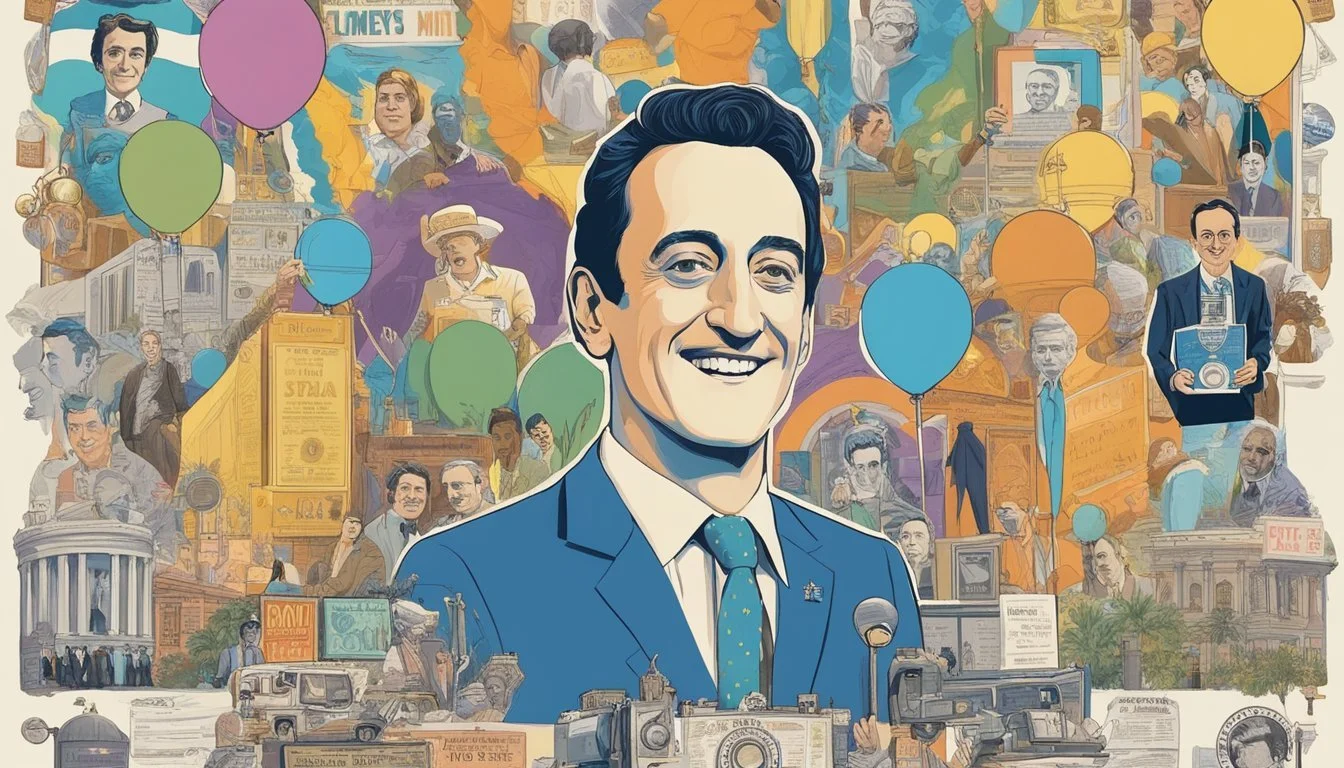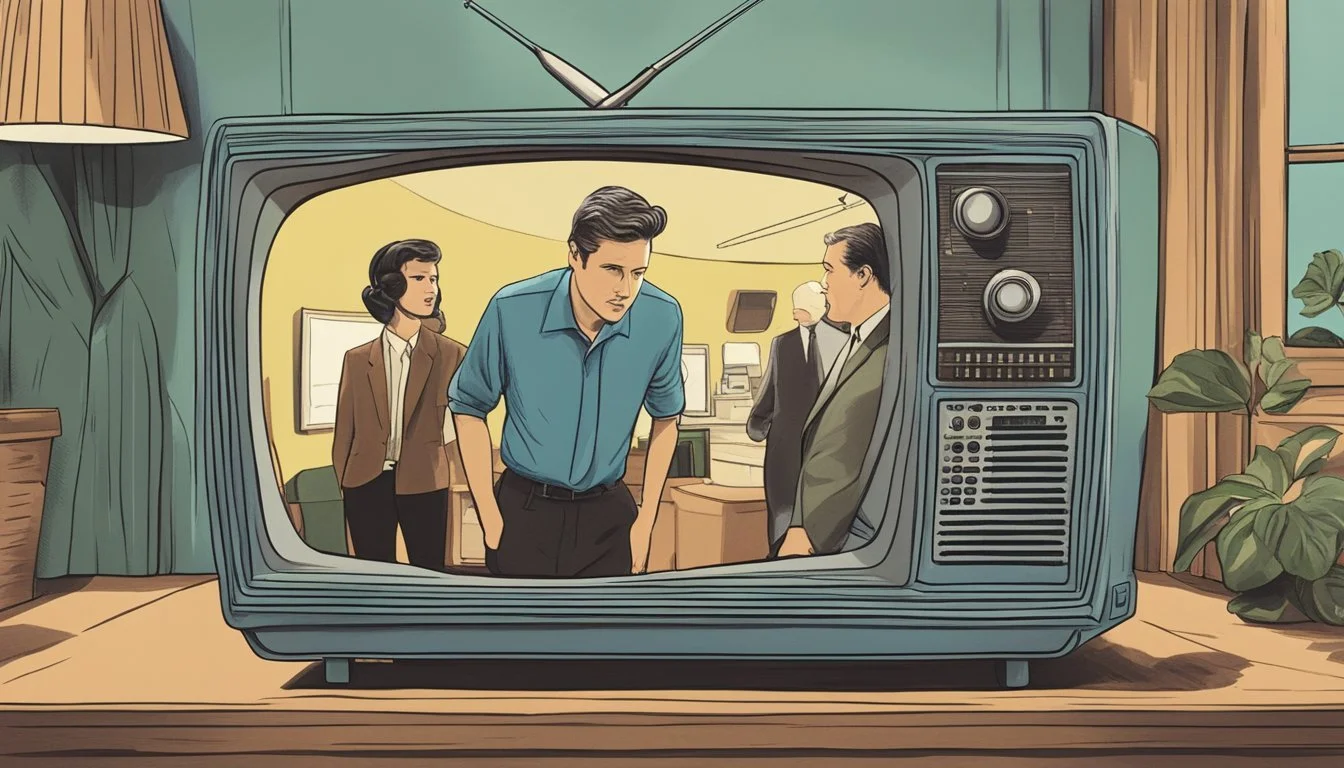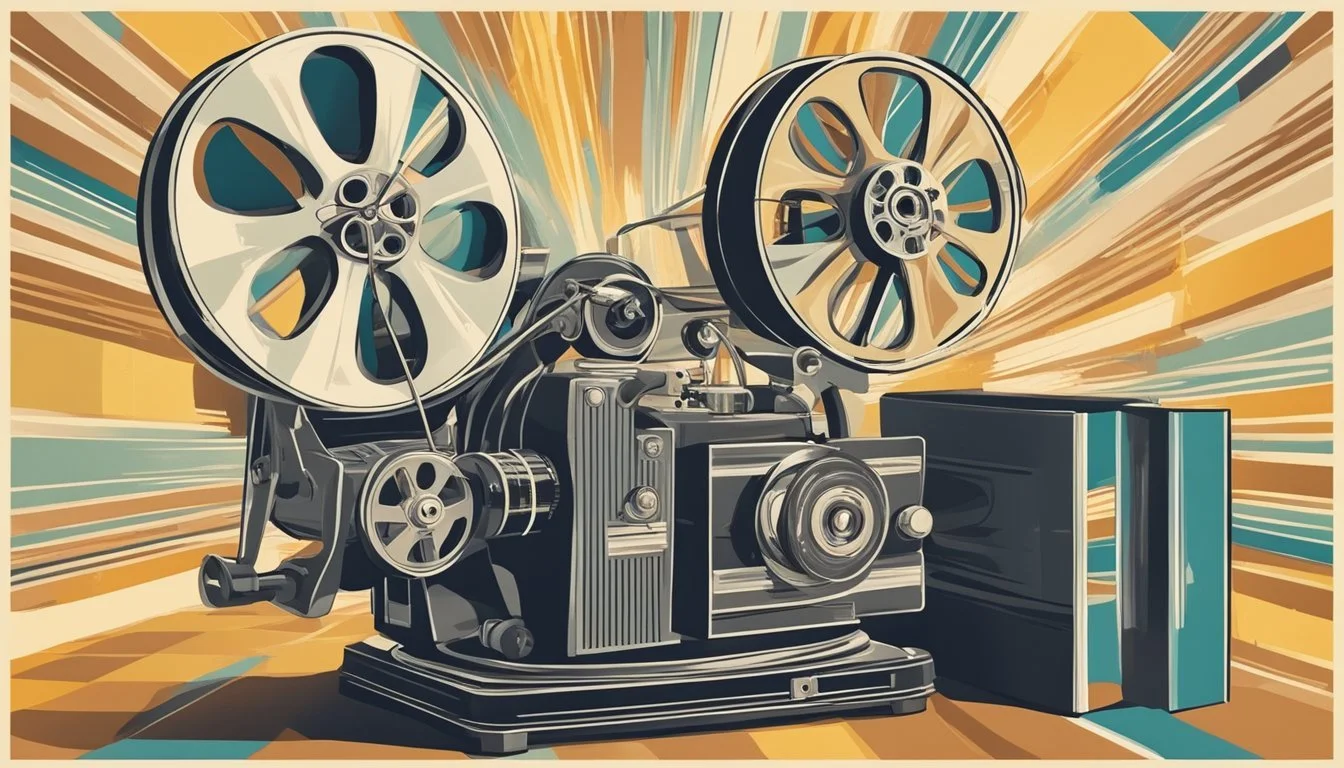Top Documentaries of 1985
A Year of Groundbreaking Non-Fiction Films
The year 1985 was a pivotal time for documentary filmmaking. As global events unfolded and social issues gained prominence, documentarians captured compelling stories that resonated with audiences. These films provided unique insights into various subjects, from historical events to personal journeys.
Several documentaries from 1985 stand out as influential works that continue to be celebrated today. These films employed innovative techniques, tackled important topics, and left lasting impressions on viewers and critics alike. By examining the top documentaries of 1985, we can gain a deeper understanding of the era's cultural landscape and the evolution of the documentary genre.
1) Shoah (1985)
Claude Lanzmann's "Shoah" stands as a monumental documentary about the Holocaust. At over 9 hours long, it presents a profound and unflinching examination of one of history's darkest chapters.
The film eschews archival footage, instead relying on interviews with survivors, witnesses, and even former Nazis. Lanzmann's approach creates an intimate and often harrowing portrait of the Holocaust through firsthand accounts.
"Shoah" took 11 years to complete, reflecting Lanzmann's meticulous and exhaustive research. The director traveled across Poland, visiting former extermination camps and other significant sites.
The documentary's power lies in its simplicity and directness. By focusing on personal testimonies, it brings the enormity of the Holocaust into sharp, human focus.
"Shoah" is widely regarded as one of the most important documentaries ever made. Its unflinching portrayal of the Holocaust continues to resonate with audiences decades after its release.
2) The Times of Harvey Milk (1984)
The Times of Harvey Milk is a groundbreaking documentary that chronicles the life and political career of Harvey Milk, one of the first openly gay elected officials in the United States. Directed by Rob Epstein, the film provides a compelling portrait of Milk's activism and his impact on San Francisco's LGBTQ+ community.
The documentary skillfully weaves together archival footage, interviews, and narration by Harvey Fierstein to tell Milk's story. It covers his rise to prominence as a city supervisor and his tragic assassination in 1978, along with Mayor George Moscone.
Epstein's film earned critical acclaim for its powerful storytelling and historical significance. It won the Academy Award for Best Documentary Feature in 1985, cementing its place as a landmark in documentary filmmaking.
The Times of Harvey Milk not only celebrates Milk's achievements but also examines the broader social and political context of the gay rights movement in the 1970s. It remains an important historical document and a testament to Milk's enduring legacy.
3) Killing Us Softly (1979)
Killing Us Softly is a groundbreaking documentary that examines the portrayal of women in advertising. Directed by Jean Kilbourne, the film explores how media images impact women's self-perception and societal attitudes.
The documentary uses numerous print and television advertisements to illustrate its points. It highlights the pervasive objectification of women's bodies and the reinforcement of harmful gender stereotypes in marketing.
Kilbourne's analysis reveals how advertisers often present unrealistic beauty standards. These ideals can contribute to issues like low self-esteem, eating disorders, and body image problems among women and girls.
The film also discusses the sexualization of female bodies in advertising. It shows how this practice can lead to the normalization of violence against women and girls in society.
Killing Us Softly has been updated several times since its initial release to reflect changes in advertising trends. Its impact on media literacy and feminist discourse has been significant over the years.
More information on Killing Us Softly
4) He Makes Me Feel Like Dancin' (1983)
"He Makes Me Feel Like Dancin'" is a documentary that showcases the work of Jacques d'Amboise, a renowned ballet dancer turned dance instructor. The film follows d'Amboise as he teaches children at the National Dance Institute in New York City.
Directed by Emile Ardolino, this documentary captures the joy and enthusiasm of young students as they learn to express themselves through dance. D'Amboise's teaching philosophy emphasizes creativity and personal growth over technical perfection.
The film features appearances by celebrities such as Judy Collins and Kevin Kline, who support d'Amboise's educational efforts. It provides an inspiring look at the transformative power of dance education and its impact on children's lives.
"He Makes Me Feel Like Dancin'" received critical acclaim and won several prestigious awards. It earned the Academy Award for Best Documentary Feature in 1983 and a Primetime Emmy Award for Outstanding Children's Program in 1984.
The documentary's success helped raise awareness about the importance of arts education in schools and communities. It continues to be celebrated for its uplifting portrayal of dance as a tool for personal and social development.
5) Broken Rainbow (1985)
"Broken Rainbow" is a powerful documentary that sheds light on the forced relocation of Navajo people from their ancestral lands in Arizona. Directed by Victoria Mudd and Maria Florio, the film won the Academy Award for Best Documentary Feature in 1985.
The documentary chronicles the U.S. government's decision to move approximately 10,000 Navajo Indians from their homes. It explores the impact of this relocation on the Navajo community and their traditional way of life.
Narrated by Martin Sheen, the film features interviews with affected Navajo families and includes contributions from Buffy Sainte-Marie and Burgess Meredith. It presents a critical examination of the government's actions and their consequences.
"Broken Rainbow" combines historical footage with contemporary interviews to create a compelling narrative. The film's 70-minute runtime effectively captures the emotional and cultural toll of the relocation on the Navajo people.
The documentary serves as an important historical record, bringing attention to a lesser-known chapter in Native American history. It remains a significant work in the realm of social justice documentaries.
6) Streetwise
Streetwise (1984) offers a raw glimpse into the lives of homeless youth in Seattle. Directed by Martin Bell, this documentary emerged from a Life magazine article by Cheryl McCall and Mary Ellen Mark.
The film follows several teenagers as they navigate life on the streets. It unflinchingly portrays their daily struggles, including prostitution, drug use, and the search for food and shelter.
Bell's camera captures intimate moments, revealing the harsh realities these young people face. The documentary gained critical acclaim for its unvarnished portrayal of urban poverty and youth homelessness.
Streetwise features memorable characters like Tiny, a 14-year-old sex worker, and Rat, a young thief. Their stories provide a poignant commentary on societal neglect and the resilience of youth in dire circumstances.
The film's impact extended beyond its initial release, sparking discussions about youth homelessness and social welfare. It remains a powerful testament to documentary filmmaking's ability to shed light on pressing social issues.
More information on Streetwise (1984)
7) Pumping Iron II: The Women (1985)
Pumping Iron II: The Women explores the world of female bodybuilding. Directed by George Butler, this documentary follows four women as they prepare for a major competition.
The film centers on the 1983 Caesars Palace World Cup championship in Las Vegas. It features prominent bodybuilders like Rachel McLish, Bev Francis, and Carla Dunlap.
A key theme is the debate over femininity in bodybuilding. Judges and competitors grapple with defining and evaluating this concept within the sport.
As a sequel to the 1977 film Pumping Iron, this documentary brought female bodybuilding into the spotlight. It showcased the dedication and physical achievements of women in a male-dominated field.
The film provides an intimate look at the training regimens, personal struggles, and competitive spirit of its subjects. It captures a pivotal moment in the evolution of women's bodybuilding.
8) Marcel Ophüls' November Days (1990)
Marcel Ophüls directed "November Days," a documentary exploring Germany's reunification. The film features interviews with key figures from East Germany, offering insights into the fall of communism and its aftermath.
Ophüls, known for his investigative approach, turns his attention to a pivotal moment in German history. He captures the thoughts and experiences of those directly involved in the events surrounding the collapse of the Berlin Wall.
The documentary provides a nuanced look at the complexities of reunification. It examines the hopes, fears, and challenges faced by Germans during this transformative period.
Ophüls' signature style of probing interviews and historical context is evident throughout the film. He brings a critical eye to the subject, exploring both the positive and negative aspects of reunification.
"November Days" stands as a valuable historical document, preserving first-hand accounts of a defining moment in 20th-century European history.
9) Burden of Dreams (1982)
Burden of Dreams offers a captivating look behind the scenes of Werner Herzog's ambitious film Fitzcarraldo. Directed by Les Blank, this documentary chronicles the tumultuous production process in the Peruvian Amazon.
The film showcases Herzog's relentless determination to realize his vision, including moving a 320-ton steamship over a hill. Blank captures the challenging conditions, conflicts with indigenous people, and the toll on cast and crew.
Klaus Kinski's volatile behavior as the lead actor adds another layer of drama to the already fraught production. The documentary reveals the physical and psychological strain experienced by all involved in bringing Fitzcarraldo to life.
Burden of Dreams received critical acclaim for its raw portrayal of filmmaking under extreme circumstances. It won the 1983 British Academy Film Award for Best Documentary, solidifying its place in cinema history.
More information on Burden of Dreams
10) El Salvador: Another Vietnam (1981)
"El Salvador: Another Vietnam" is a powerful documentary directed by Glenn Silber and Teté Vasconcellos. The film explores the complex political situation in El Salvador during the early 1980s.
The documentary draws parallels between U.S. involvement in El Salvador and the Vietnam War. It examines the origins of the Salvadoran civil war and America's role in the conflict.
Through interviews with key political figures and footage from Senate hearings, the film provides insight into the escalating violence in El Salvador. It highlights the presence of U.S. military advisors in the country.
The documentary covers El Salvador's turbulent history from the 1920s to the 1970s. It focuses on the impact of U.S. government policies in the region during this period.
"El Salvador: Another Vietnam" serves as a critical examination of U.S. foreign policy in Central America. It raises important questions about the consequences of American intervention in foreign conflicts.
Historical Impact Of 1985 Documentaries
1985 marked a significant year for documentary filmmaking, with several groundbreaking works leaving lasting impressions on the industry and society. These films shed light on important issues and introduced innovative techniques that would shape future productions.
Influence On Filmmaking
Documentaries from 1985 pioneered new approaches to storytelling and cinematography. Directors experimented with creative editing techniques and narrative structures, pushing the boundaries of the genre. Some films incorporated reenactments and dramatizations, blurring the lines between fact and fiction.
These innovations influenced subsequent documentarians, encouraging them to explore unconventional methods of presenting real-life events. The use of archival footage became more sophisticated, with filmmakers skillfully weaving historical material into their narratives.
1985 also saw advancements in interview techniques. Documentarians developed more intimate approaches to subject interactions, resulting in more candid and revealing on-camera moments.
Cultural Reflections
Documentaries of 1985 tackled pressing social issues, sparking public discourse and raising awareness. Films addressing the Holocaust, such as Claude Lanzmann's "Shoah," had a profound impact on historical understanding and collective memory.
These works often challenged prevailing narratives, encouraging viewers to question established perspectives. Environmental documentaries gained traction, highlighting ecological concerns and influencing public opinion on conservation efforts.
Music documentaries captured the zeitgeist of the era, preserving cultural moments for future generations. The "We Are The World" documentary showcased the power of artists uniting for a cause, inspiring similar initiatives in subsequent years.
Themes Explored In 1985 Documentaries
1985 documentaries delved into pressing social issues and emerging technologies, reflecting the cultural zeitgeist of the era. Filmmakers tackled topics ranging from civil rights to computer advancements.
Social Issues
The Statue of Liberty documentary examined the iconic monument's history and its connection to American ideals of freedom. It explored immigration, cultural identity, and the concept of liberty in 1985 America.
Live Aid brought global attention to the Ethiopian famine crisis through a massive benefit concert. The film highlighted international humanitarian efforts and the power of music to drive social change.
Some documentaries addressed ongoing civil rights struggles and racial inequalities. These films shed light on discrimination and the fight for equal treatment in various spheres of society.
Technological Advances
Chronos showcased groundbreaking time-lapse cinematography techniques. This innovative approach allowed viewers to perceive the passage of time in novel ways across diverse global locations.
Several films explored the burgeoning computer revolution. They documented the rapid development of personal computers and their growing impact on work, education, and daily life.
Space exploration remained a captivating subject. Documentaries covered NASA missions, satellite technology, and the ongoing quest to understand the cosmos.
The rise of biotechnology also featured in some films. These works examined genetic engineering advancements and their potential implications for medicine and agriculture.
Notable Directors And Their Techniques
Several directors made significant contributions to documentary filmmaking in 1985, employing innovative storytelling methods and distinctive cinematic styles. Their techniques shaped the landscape of non-fiction cinema during this pivotal year.
Innovative Storytelling
Claude Lanzmann's "Shoah" revolutionized documentary storytelling in 1985. The 9.5-hour film eschewed archival footage, relying instead on intimate interviews with Holocaust survivors, witnesses, and perpetrators. Lanzmann's patient, probing approach allowed subjects to recount their experiences in detail.
Errol Morris's "The Thin Blue Line" introduced reenactments to enhance its investigative narrative. This technique, while controversial, proved effective in visualizing conflicting testimonies and challenging the audience's perceptions.
Frederick Wiseman continued his observational style with "Racetrack," immersing viewers in the world of horse racing without narration or interviews. His fly-on-the-wall approach captured authentic moments and social dynamics.
Cinematic Styles
Ken Burns refined his signature pan-and-zoom technique in "Huey Long," bringing still photographs to life. This approach, later dubbed the "Ken Burns effect," became a staple in historical documentaries.
Godfrey Reggio's "Inspirations" showcased his unique visual style, blending time-lapse photography with Philip Glass's minimalist score. The film's wordless narrative relied on striking imagery to convey its message.
Albert and David Maysles employed their direct cinema approach in "Ozawa," following conductor Seiji Ozawa. Their unobtrusive camera work captured candid moments, allowing the subject's personality to shine through naturally.









